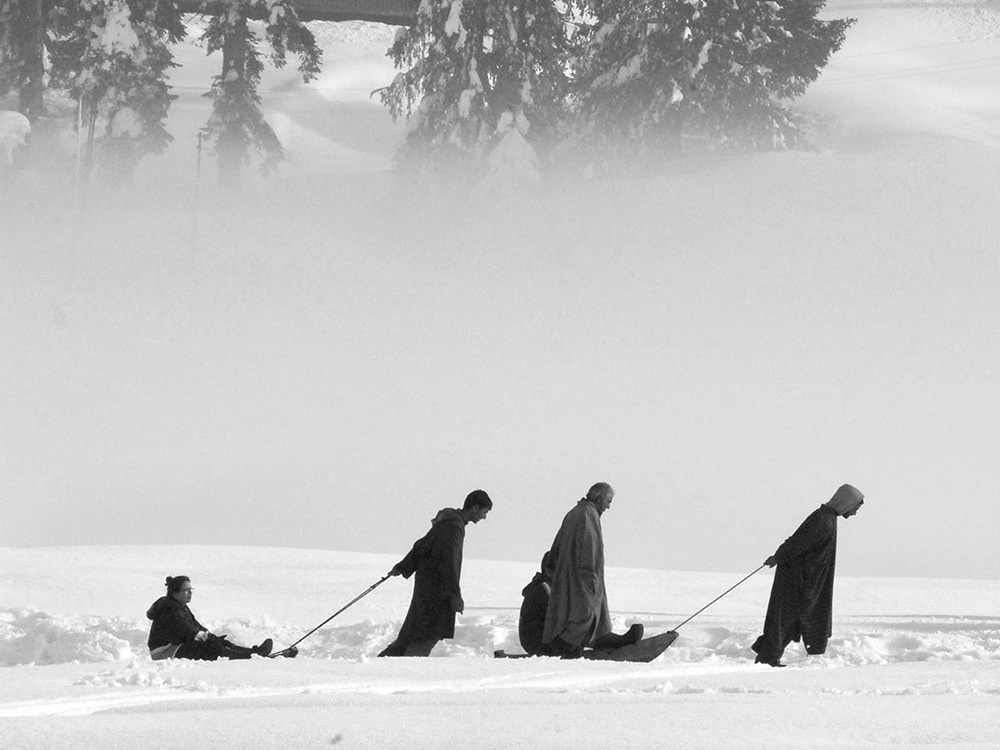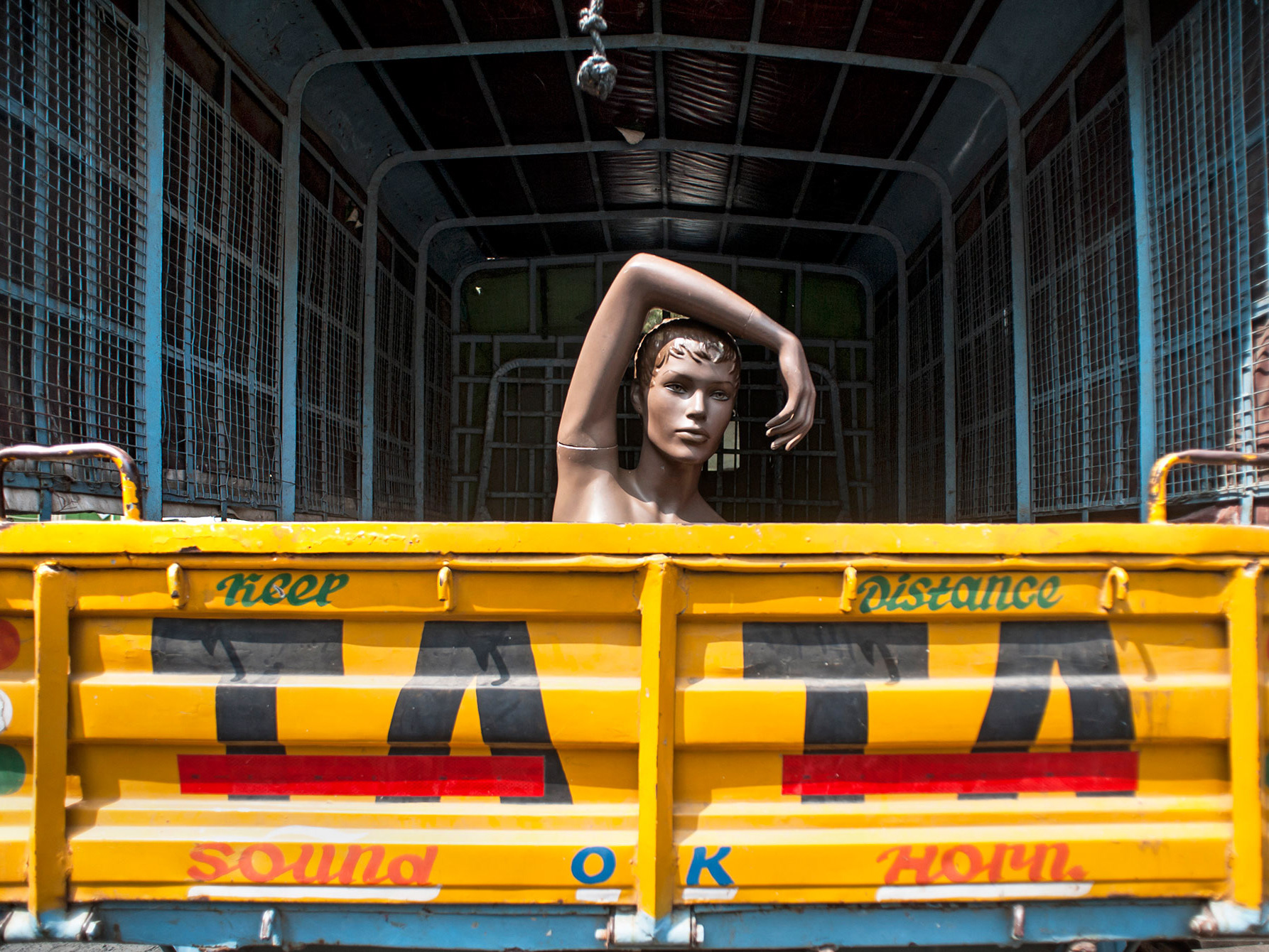‘I used to watch Yakshagana right from my childhood. I had this desire to dance like that—not the sthree vesha (female roles), instead the raja vesha (male roles)—I really wanted do it,’ she says.
‘Yakshagana, for me, is Bhakti (devotion). We may be tired before we go on stage but the moment we cross on to the stage, there is a divine power that carries us through.’
On playing a character, Poornima says, ‘There are padhyas (poems/ verses) for each role that are convincing. But actually, I don’t know, once you go on stage, you just drown in your role, I can’t say how! Bhakthi (devotion), Shraddhe (diligence)— these are the things you embody, you are inside your character, you are not yourself. Supposing you are Mahishasura, you have to think like him. You have to stick your tongue out, roll your eyes, you have to imagine yourself in this light.’ As opportunities grew for Mahila Yakshagana and they began to gain more exposure, Poornima’s Mahishasura gained recognition as a character that she plays even better than her male counterparts.
After the first full-fledged seven-hour all-women’s prasanga in 2013 there was no looking back for Mahila Yakshagana. The momentum that it gained was further bolstered by the number of women and young girls that learnt the art with heartening enthusiasm.
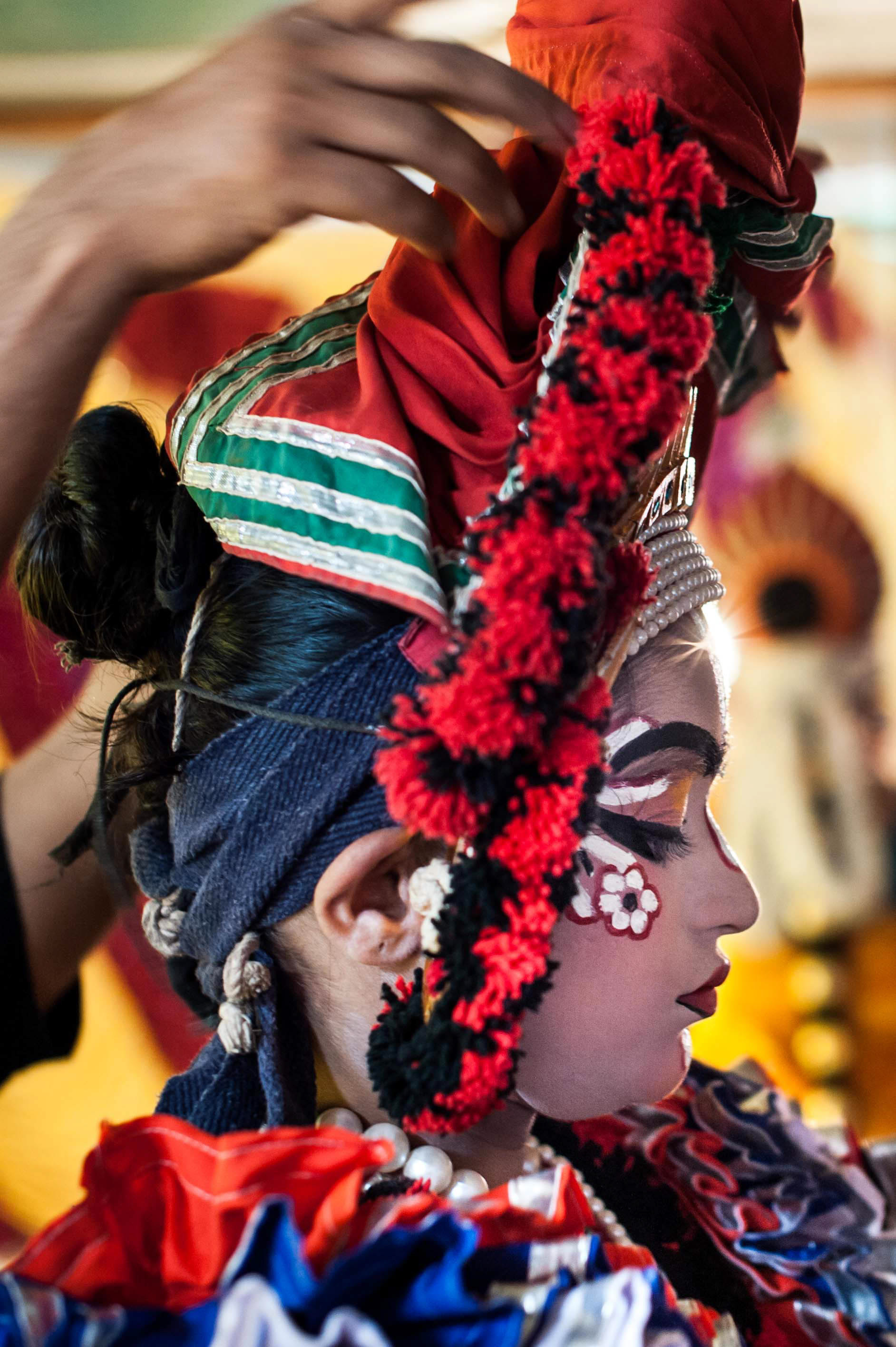

Moments before going on stage, Sumanagala Ratnakar, as Hanumantha, discusses with Mallika who play the character of Shiva.
Sumangala Ratnakar paints her feet red in preparation for her role as the devi who defeats Mahishasura. ‘I take on sathvika roles more, I feel my body language suits characters like Devi or Krishna better.’ Stemming from a Bharatnatyam background, she says, ‘The foundation that I had in Bharatnatyam helped me learn Yakshagana - The theory I learnt in Bharatnatyam allowed me to better understand the nuances of Yakshagana.’ Her contribution to Mahila Yakshagana has been tremendous: taking the initiative to bring together and teach several women and girls has been instrumental in creating the opportunity for Mahila Yakshagana to thrive.
Vaishnavi is another performer who has learnt both Bharatnatyam and Yakshagana. She says, ‘Yakshagana is gaining a lot of respect and value around these parts now, and we are in fact being called for more Yakshagana programs than Bharatnatyam programs.’ Yakshagana has been a male-dominated practice because of the amount of (extempore) dialogue that is involved (female artists have sometimes found to be lacking in this area due to a lack of experience). ‘The important thing is to know the viseya (matter), so that one can prepare her own dialogue or portray a multitude of characters even if the role is assigned last minute. It is the only way that we can become independent,’ explains Vaishnavi.
Savithri, 65, is Sumanagala and Poornima’s oldest student. Gritty and determined to continue her practice, she is seen here on her 100th show. Addressing her family and friends, she says, ‘Learning Yakshagana and performing in 100 shows has been possible for me because of my husband’s support—not once has he said do not go or that he will not do a said task because it is “women’s work”.’ He has continued to encourage her even after suffering a stroke that left him partially dependent on her for everyday functioning.
Villagers stop by to watch a daytime performance of Girija Kalyana in a temple premise in Karkala. Seen onstage are artists Sai Suma and Revathi. Sai Suma’s father is a Yakshagana artist himself who has been performing in the Kateel Mela (a distinguished forum of Yakshagana artists) but she was never encouraged to learn the art form. ‘Even as recently as 5–6 years ago, there was not much support for Mahila Yakshagana. If we said we are going to perform, people would be completely dismissive by saying “they are just going to jump around” (literally translated from colloquial Kannada) with no acknowledgment of any skill or effort on our part. We were seen as gand beeris (tomboys) and there would be much mocking if we came home late after the performance.
Sai Suma in preparation for her role of the tiger in the story of ‘Punyakoti’. ‘I would never play 'rakshasi' roles that needed a different kind of voice before,’ she says, referring to ‘demonised’ characters that require a hoarse, loud voice. ‘Some people have identified a shortcoming in Mahila Yakshagana on the basis that women’s voices are not as strong or high pitched as men’s. But even with regard to this, people like Sai Suma have put us on par with male artists,’ says Vasundhara. ‘Listen to her voice when she performs—you won’t be able to tell if it is a man’s or woman’s.’
A mixture made of rice flour, paint and oil is used as part of the make–up for characters that are meant to be terrifying. The colours red and black along with some accents of yellow are typically used for ‘rakshasa’ roles to evoke a sense of fear. Poornima says, ‘Not all roles are the same—even if you are playing a rakshasa, he could be sathvika, meaning there are good attributes in him as well. For his people, he is a good guy. It’s only in a few situations that we play him in completely negative light. This depends on what is happening on stage—you have to be completely involved and tuned in to where the narrative is going.’
Sumangala and Malathi hold up a cloth as a make-shift changing room. The women express that building a team of women performers makes it possible for Mahila Yakshagana to grow. It reassures families about the safety of the girls so they are more willing to allow them to participate. In a largely male group, people feel a bit hesitant and worry about how to send their daughters, especially, given that performances often only end late at night.
Chaya Lakshmi (L) and Malathi (R) watch the performance from the wings before their cue to go on.
When asked what joys or hardships she has experienced as a woman in Yakshagana, Malati says ‘There have not been any difficulties in any way. I have only been encouraged in my journey with Yakshagana. Joys, there have been many—friendships formed, reviews and appreciation for the characters that I have played so far is a matter of much happiness.’
A typical scene from a Yakshagana green room where performers are in different stages of preparation and children as well as other non-performers are welcome to wander by. The artists believe that through Yakshagana, we can teach children many things: sathya (truth), dharma (religion), artha (essence), gaurava (respect), generosity, culture, and how to deal with difference people in a diverse society. ‘Yakshagana can offer a wealth of knowledge to anyone who wants to learn. In the earlier days, some who did not have the opportunity to go to school turned to Yakshagana seeking an education. It can illuminate ideas so sophisticated that we, as post-graduates, are also unaware of them,’ say Sai Suma and Vasundhara who are both lecturers in colleges.
Maithri Bhatt spends a few quiet moments outside the green room. She recounts, ‘When I was younger, I did not know anything about Yakshagana. My grandfather—my mother’s father—was a bhagavatha. He would sit me in his lap and recite padyas (verses). That’s how my interest in Yakshagana began.’ Her first performance, 12 years ago was for the prasanga ‘Hiranyavade’ in which she played the character Prahlada. She says that she is adamant on continuing the journey with Yakshagana and hopes to pursue a PhD in the subject.
In a light-hearted moment that was followed by much laughter, Dhriti makes a face at one of her co-performers. Humour holds a special place in the Yakshagana green room; one periodically hears explosive bursts of laughter
In a temple premises, Dhruti and Dhruvi, who both play Devendra balas, rehearse some movements a few minutes before they go on stage. Maithri rests, as multiple layers of cloth that are wrapped around performers in order to create a large presence can get very heavy.
Many years ago, Maithri watched some of the artists that she performs with today: “My mother tells me that when I was a baby, Poornima aunty’s troop had come to our town to perform in a temple. My grandmother and mother took me to that temple to watch the performance. Apparently I watched it without any fuss and my mother was thrilled about that! She wanted for me to become an artist when I grow up because she didn't have much support to pursue this. I feel very proud to be a woman who practices Yakshagana,” says Maithri.
Performers typically rest their hand on the shoulder of the man who ties the costume, like Jitashree here, as ornaments are fastened to her arm after the main costume has been worn.
She looks into the light of the setting summer sun, sweat dripping down her painted face owing to the humidity of the coastal region.
Bhavyashree, the Bhagavatha, sings for the ‘Chowki’ Pooja to Lord Ganesha. This is a decisive moment for all members involved in the performance as it is this that defines the critical transition from the green room to the stage.
While many women have involved themselves in the dance/theatrics of Yakshagana, there are only a few women who have engaged with the musical aspect of it.
Sumangala Ratnakar with her students before a performance.
When asked if there is anyone such as a ‘director’ in Yakshagana, she says “ Nowadays people call themselves directors- at the amateur and ladies level. But the prasanga itself is already ready. So I think it’s actually better to have ‘ranga nirdeshana’ which is a rough sort of choreography/guidance that focuses only on the movement on stage. In Bharatnatyam, rehearsals and more precise directions are necessary because of how synchronized the entire performance is. In Yakshagana, however,the musicians tailor their act according to the rhythm of the performers so all that needs to be done for the performance to be convincing is for the performers to experience their characters and express that.”
‘Gejje kattodu’ – to tie anklets is a colloquial way of saying ‘to perform’ in Kannada. Here, children take a break from the process of preparation and dangle their feet, looking over fields and a highway in the distance.
The elaborate process of make-up enables the artists’ transformation into their patras (roles). This often involves delving into the minds of the characters they portray, leaving behind their own realities. Vasundhara says, “We may have plenty of worries in our personal lives. As women, we have several hardships. When we leave the house, we have to ensure that all our domestic responsibilities are completed. I have a 6 year old daughter, who was once unwell with 102 degree temperature and I had committed to a performance on the same day. I could not disregard my commitment because no one will be able to replace me last minute. On that day I cried and left the house. But I can’t carry that worry with me, I can’t be myself, I have to be my character.”
Another key component of metamorphosing into the character they play is to envision the emotions of the character – the contemplative mind space during the process of make up allows for this kind of envisioning. The artists then absorbs the various emotions that they imagine the character to experience and present that on stage. They add that “The Chende and Pettu also give us a feel for the kind of emotion and the way in which it needs to be expressed. If you have thought through the character in your head, when the Chende and the Pettu begin to play, the expression happens automatically.”
Sakshi, preparing for her patra in the Pagadi Vesha – her favourite type of costume. There are different types of costume designs that use different colours, depending on the character that is being portrayed – Pagadi Vesha is one. ‘Pagadi’ is shaped as a leaf; it comes from the practice of a leaf being given to devotees in temples as an auspicious act.
The care and chemistry that performers share with each other is evident in the Yakshagana green room. Their approach to the performance and the art form is rooted in the community rather than the individual.
The camaraderie that develops between artists as they spend hours together in the green room shows itself, not uncommonly, in casual expressions of affection like this.
Some girls, like Maithri and Shilpa in this photograph, are learning essential skills like make- up in order to become self-reliant. While there are very few who are able to do more than just the base make-up, it is a huge step towards Mahila Yakshagana becoming less dependent on external makeup artists.
Malati, a seasoned Yakshagana artist who often does male roles says she learnt the art form by merely watching it: “ You can only be taught so much- they will teach you the steps but what happens beyond that is completely left to us.” She elaborates that her preference for Raja Vesha (form) might stem from the fact that the movements are easier to learn or because it is a male form. “But the gath (rhythm) of Raja Vesha is itself different, the style too. I like that. I like wearing a kirita (crown/head gear) and being on stage.
Prathistha and Saksha watch a performance from backstage as they await their turn to go on stage.
Prathistha has been learning Yakshagana for the last 7 years from Poornima Rai. She explains “this has not only taught me dance but it has taught me how to adapt- not every place is the same. Even small things- be it washrooms, the place where we change clothes, food – we can’t insist that we will eat only food that we like. When you are hungry, you have to eat! So whatever food is available, you eat. All the adjustments that you have to make in life- if you perform Yakshagana, you can live anywhere you want- that is the kind of training. It has been a really valuable experience for me; I have changed a lot from the person I used to be, I was not very adaptable. Now, there are new experiences to be had and new people to meet and get to know.
An essential component to successfully internalising and becoming a mythical character is to envision yourself as such. The artists express that there are areas in which Mahila Yakshagana is lacking. Sumangala Ratnakar notes: ‘Not too many women are able to deliver dialogues extempore because they do not know the matter/content of the prasanga. In order to be able to speak extempore, one must study. We need to reach that level, we cannot make the excuse that we are women and have limitations that will not allow us to study. We should study—why not?’
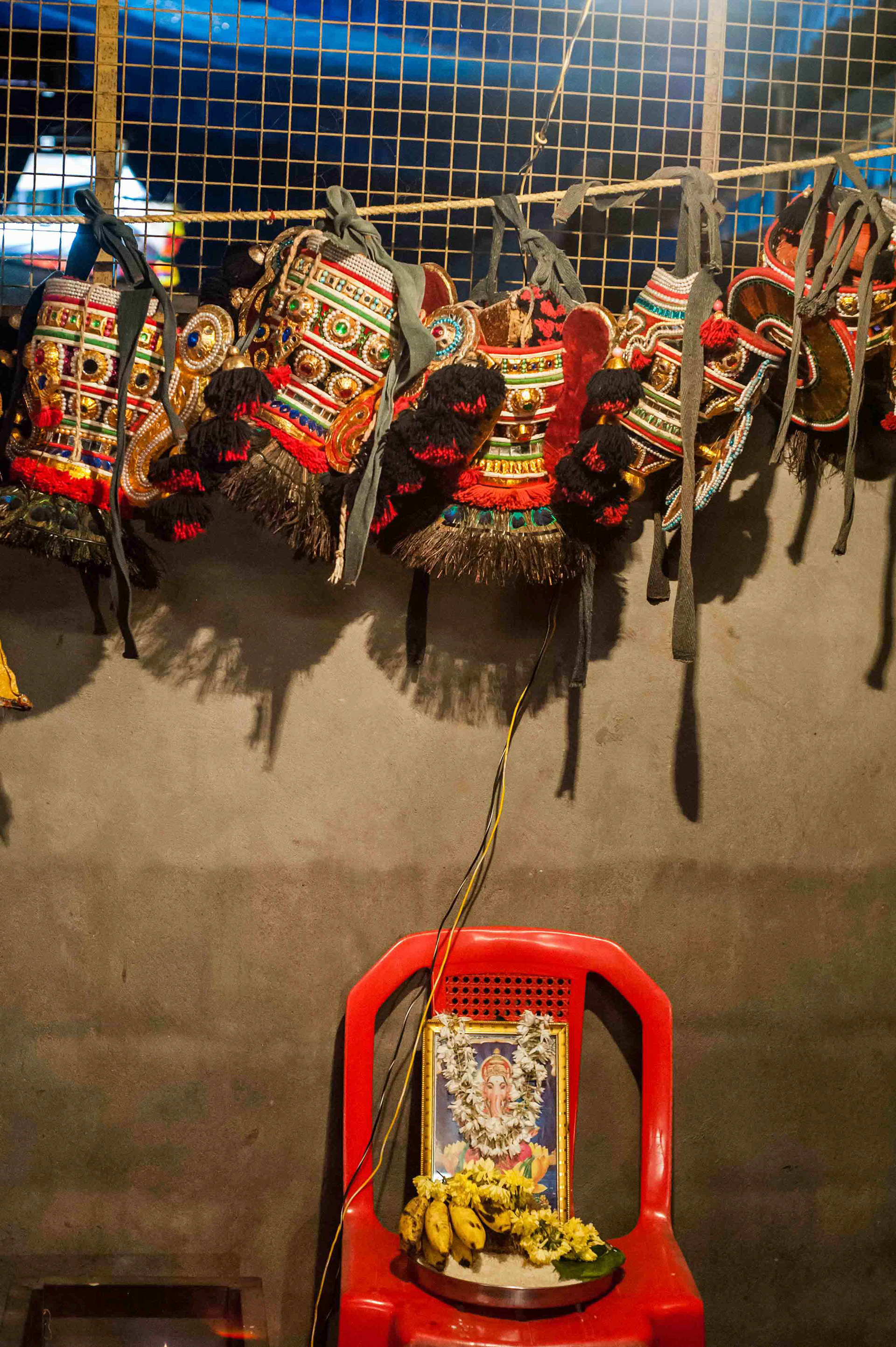
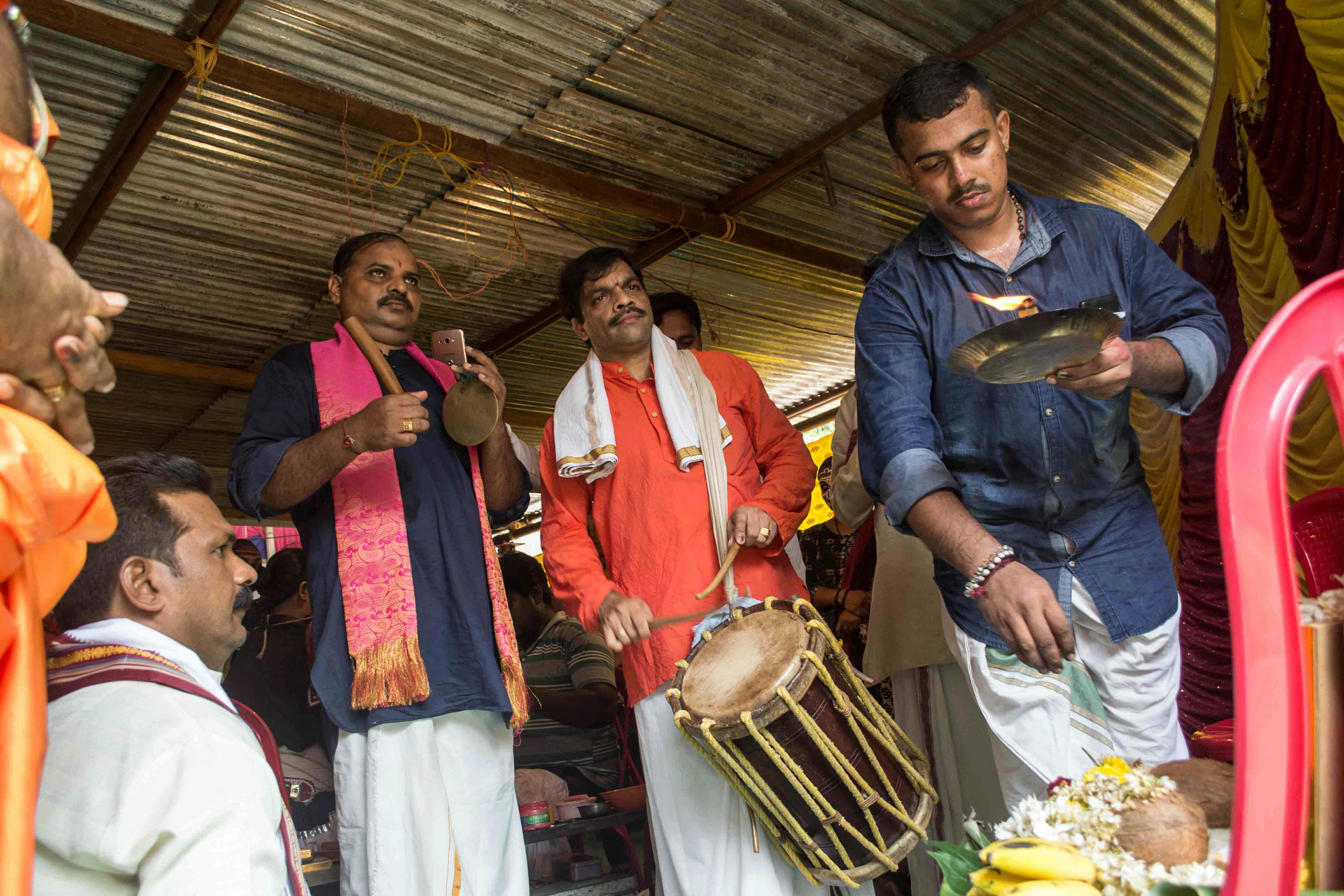
Sumangala Ratnakar strikes a pose backstage as the devi who defeats the demon Mahishasura. One of the striking rasa (emotions) this character expresses is that of ‘veeram’, or heroism/courage. In Mahila Yakshagana too, it is a key sentiment. The initiative to build an all-women’s troop when there was no such notion as Mahila Yakshagana is in itself inseparably interwoven with heroism/courage; as is the effort that so many girls have invested, along with all the other responsibilities and constraints that are imposed on them.
Another aspect of performance that many women artists find challenging is that of physical stamina: ‘For us women, we are unable to develop stamina through practice like men do because unlike them, we don’t have the opportunity to consecutively perform and practice for six months of the year. There are more hindrances for women—our practice needs to be developed alongside our other responsibilities. Our physiology is also a factor in that; after childbirth, many women experience a drastic drop in endurance levels. And periods are a problem—we cannot perform in melas when we have our period. At other times, the cramps worsen because of the heavy costumes but we cannot compromise on the performance. So yes, we do have more problems as compared to male artists but we are determined to overcome them.’
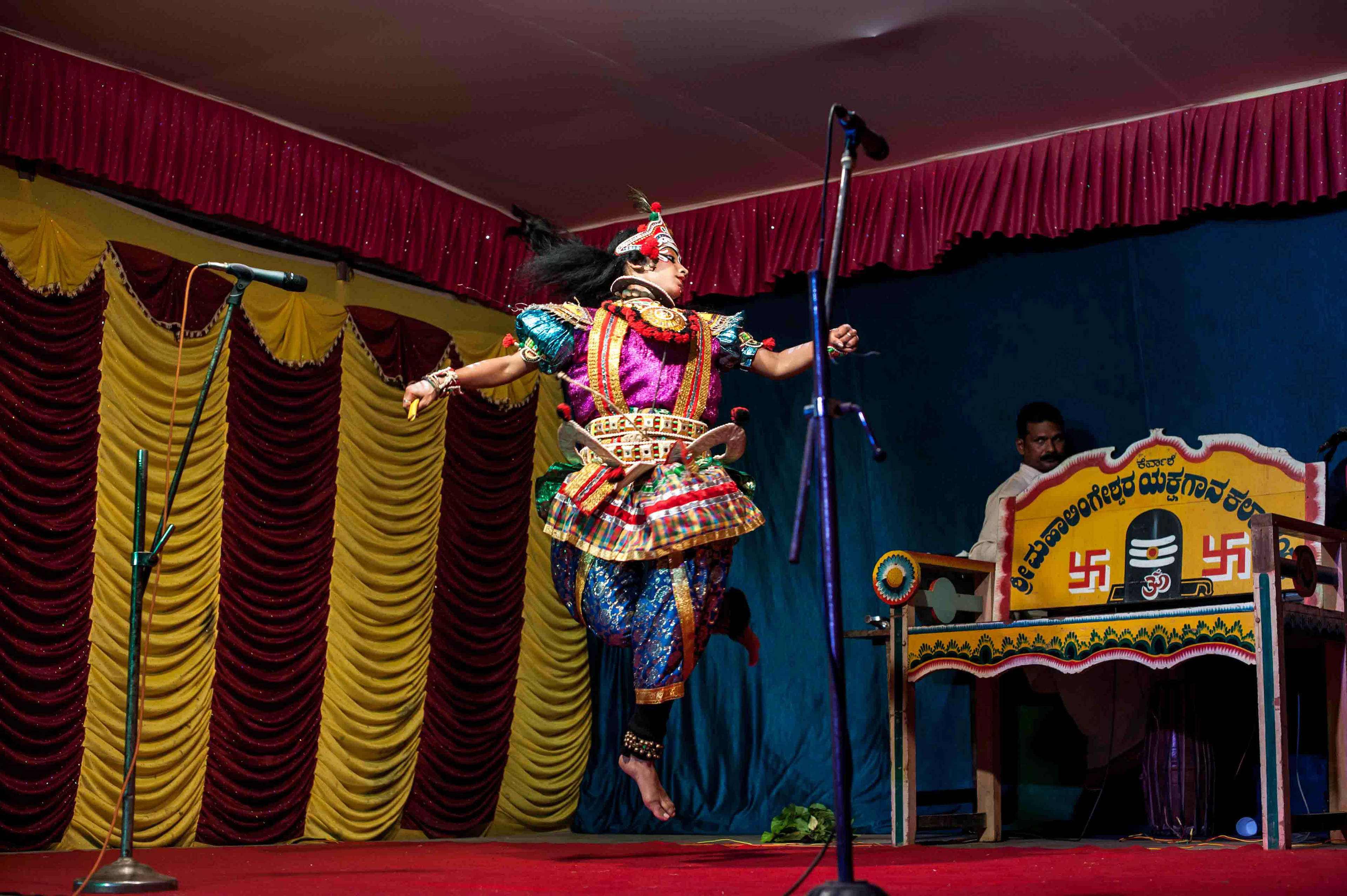
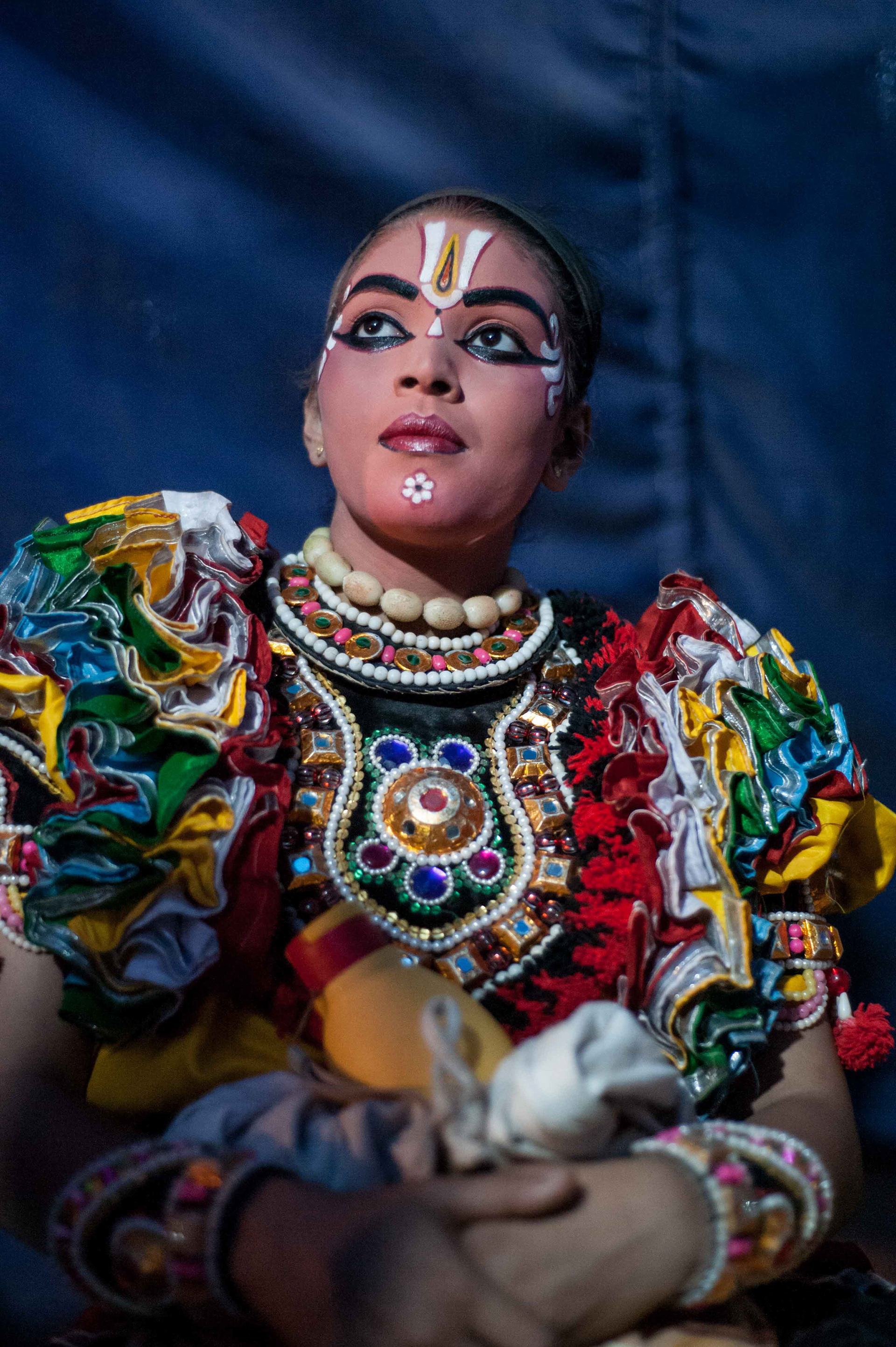
I want that everyone learns this form and that this art is preserved; I hope for it to prosper in the future,"
